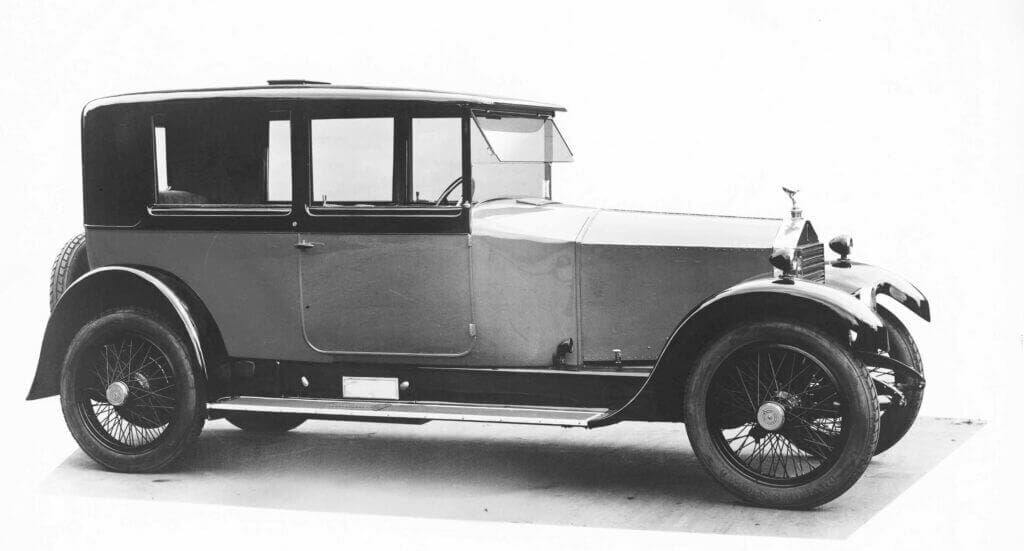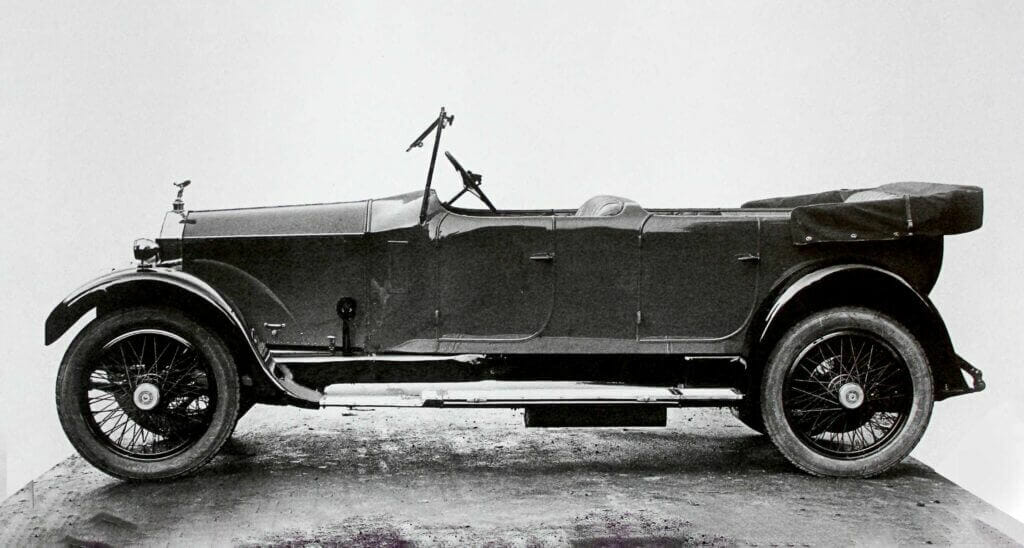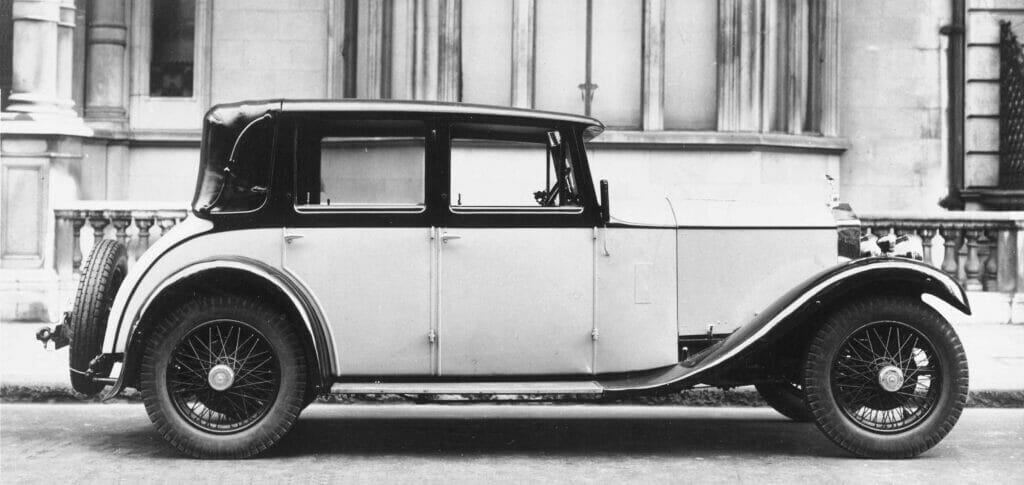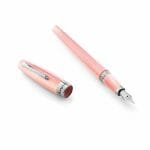Rolls-Royce Motor Cars celebrates the centennial of the legendary 20 H.P., also known as the ‘Twenty,’ which debuted on October 6, 1922. Designed by Sir Henry Royce, it ranks among the marque’s most important and influential models.
This model is the direct ancestor of today’s Ghost, Wraith, Dawn, and Cullinan as the first Rolls-Royce designed specifically for the owner-driver rather than primarily for chauffeured use. The ‘Twenty’ also has historical parallels with the forthcoming Spectre in that it established the mechanical template for generations of Rolls-Royce motor cars that followed it.
‘The Best Car in the World’ Born in La Belle Epoque
Rolls-Royce introduced the 40/50 H.P., better known as the Silver Ghost, in 1906.
This epochal motor car earned the title of ‘the best car in the world‘ thanks to its near-silent engine, flawless reliability, and mighty feats of endurance. It also instituted a new’single-model’ policy, replacing the company’s previous practise of offering several different models concurrently. This proved to be a financially prudent strategy until the outbreak of the Great War in 1914.
Rolls-Royce devoted the next four years to military projects, including an armoured version of the Silver Ghost and a series of magnificent aero engines. However, the end of the war in 1918 revealed an entirely new world in which the pre-War socioeconomic, political, and cultural orders had been completely transformed. The transition from war to peacetime meant that Rolls-Derby Royce’s works, which employed 8,000 people by 1919, now had massive excess capacity.

“Every Rolls-Royce is both evolutionary and revolutionary: true to our essential design and engineering principles, while taking technology, comfort and the driving experience to a new level. But during our long history, there have been certain defining models that have permanently altered the wider automotive landscape. The ‘Twenty’, launched 100 years ago, is one of them. We join with owners and enthusiasts around the world in marking this very special occasion and celebrating the lasting legacy of this legendary and much-loved motor car.”
Torsten Müller-Ötvös, Chief Executive Officer, Rolls-Royce Motor Cars
Rolls-Royce had a Keen Eye on the Future
Even before the Armistice in 1918, Henry Royce anticipated the need for a smaller car to offset the likely decline in sales of the larger 40/50 H.P. chassis. Royce, being the visionary that he was, correctly predicted that many Rolls-Royce owners would be unable to recruit, retain, or afford the substantial domestic staff they had employed prior to the War. He reasoned that the option of a motor car that did not require the laborious and costly weekly maintenance demanded by a Silver Ghost, nor a chauffeur to drive it, would be an appealing proposition.
After two years, the board of directors agreed with him. In 1920, Royce moved his engineering skills from ‘designing’ to ‘manufacturing’ a smaller car. This decision was supported by the need to take up the remaining oversupply at the Derby factory, where the workforce had already been reduced to 2,000, as well as the need to supply a car better suited to some customers’ post-war needs than the 40/50 H.P.
Maintaining Standards of Excellence
Royce intuitively understood that, despite their now more precarious financial situation, these owners were accustomed to Rolls-Royce standards of excellence and would expect nothing less from a new model, regardless of size or specification. As a result, the company went out of its way to reassure them about the proposed 20 H.P., stating that “under no circumstances would the standards of excellence maintained in their products be diminished.” Royce confidently informed the Board in September 1920 that he was satisfied “that the standard of excellence of production was maintained.”

The Debut of the ‘Twenty’ Had Great Appeal
Rolls-Royce revealed its brand-new “small horsepower” automobile on October 6, 1922.
The Silver Ghost’s 7.5-litre engine was more than twice as big as its straight-six cylinder, 3.1-litre counterpart. The new model did, however, weigh about 30% less than its bigger sister. This made the performance disparity between them smaller than the raw numbers might indicate, along with other improvements in engineering design made since the Silver Ghost’s introduction in 1906.
The new 20 H.P., or simply the “Twenty,” as it quickly became known, did in fact make a significant technical advance right away. Even though the Silver Ghost was still better than its direct rivals in terms of performance, the lightness of its controls and the effectiveness of its steering, braking, and suspension systems made it feel very archaic in contrast.
A larger car with an outdated appearance did not appeal to new consumers, and the ‘Twenty’ quickly became a strong favourite among both of these groups of Rolls-Royce fans, as well as those for whom the purchase price and ongoing operating costs were crucial factors.
Owners were happy to share their enthusiasm for the new model. In letters to the motoring press, one praised it as ‘a charming piece of mechanism’ while another declared, ‘I have never handled anything as sweet-running’. A company advertisement quoted an expert assessment of the car as ‘everything a motorist can want… motoring with a high degree of refinement and its simplicity of construction will delight the driver’. After taking delivery of his car, a contented owner wrote to the company from his home in France: ‘I drove my 20 H.P. here from Liverpool and am very satisfied with the running of the engine, not having to change gear between Liverpool and Versailles’.
Accommodating the Switch from Chauffeur to Owner-Driver with Performance In Mind
The “Twenty” was constructed as a “rolling chassis,” like all Rolls-Royce vehicles of the time, on which buyers requested custom bodywork from a separate coachbuilder. Royce hoped the coachbuilders would make their inventions as light and compact as possible because he intended it to be primarily an owner-driver vehicle.
He was unable to alter some consumers’ ingrained habits, though. Many “Twenty” owners insisted on having coachwork built in their favoured solid, formal design, which was significantly heavier than necessary and increased wind resistance. These enormous, overbuilt bodies inexorably degraded performance, to Royce’s obvious annoyance.
As a pragmatist at heart, Royce was aware that there was only one way to increase the weight-to-performance ratio. The 20/25 H.P., which was powered by an engine with a larger capacity, replaced the “Twenty” in 1929. Even so, the issue was not entirely resolved, thus in 1935, Royce created the 25/30 H.P. with a 4.25-litre engine. With the Wraith of 1938, the “little horsepower” period finally came to an end. These latter variants, which were all direct developments of the “Twenty,” now give its track record and reputation even more lustre.

Profoundly Influential and Lasting Effect
Long after production of the “Twenty” ended in 1929, when no fewer than 2,940 units had been produced, Rolls-Royce was greatly impacted. The straight-six cylinder engine in particular, with its removable cylinder head and overhead valves, would serve as the model for Rolls-Royce engines for the following 30 years. Open the bonnet of any six-cylinder Rolls-Royce up until the Silver Cloud model (1955–9), and the design is instantly recognisable despite several internal upgrades. Additionally, the new Phantom’s engine followed the crucial Twenty pattern when it took the place of the by then ancient Silver Ghost in 1925.
Excellence and The Legacy Lives On for Both Types of Customers
Rolls-Royce maintained the two-model policy introduced with the launch of the ‘Twenty’ 70 years earlier until the final Phantom VI in 1992. It allowed the company to meet the needs of two types of customers: those who preferred to enjoy the ‘magic carpet ride’ from the back seat while being chauffeured, and those who preferred to drive their own car.
This approach was carried forward into the modern era when Rolls-Royce Motor Cars introduced the smaller Ghost to complement its larger pinnacle product, the Phantom.
However, today’s Rolls-Royce customers are a much broader and more diverse group than they were in the 1920s, as evidenced by the company’s expanded product portfolio.
The ‘Twenty’ has historical parallels with Rolls-new Royce’s battery electric vehicle, Spectre. Both demonstrate the brand’s willingness and ability to adapt to a changing world in which customers have new needs and expectations and old norms no longer apply. Each represents a technological breakthrough that will shape the Rolls-Royce product line for decades to come. Above all, they always exemplify Sir Henry Royce’s famous dictum: “take the best that exists and make it better.”


























